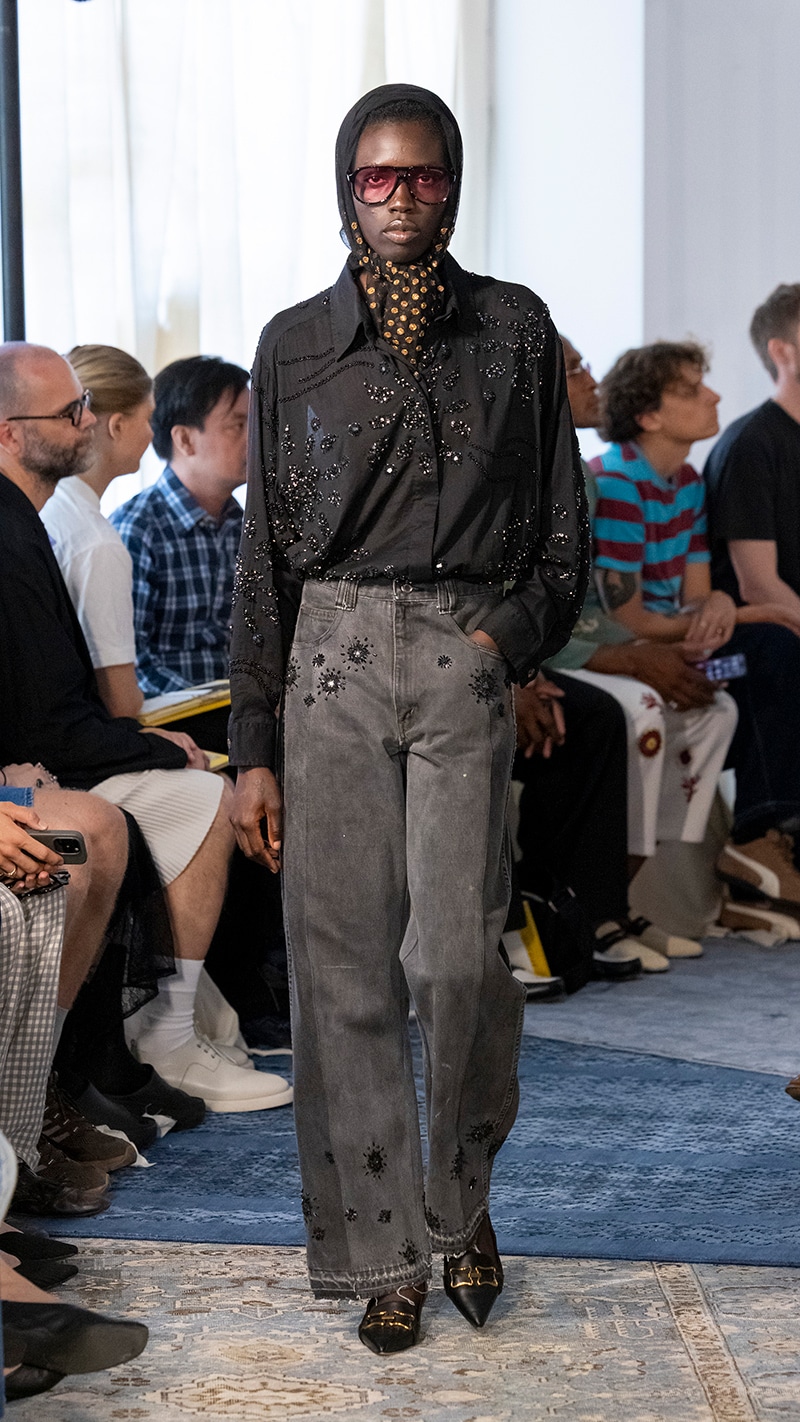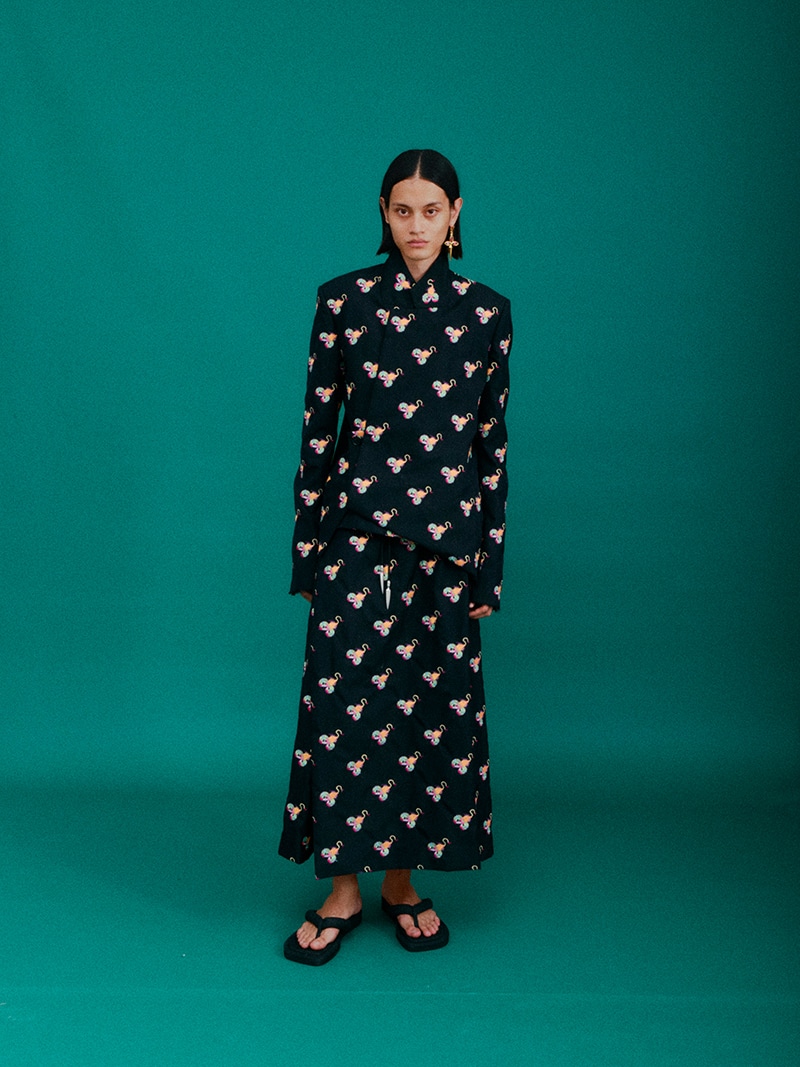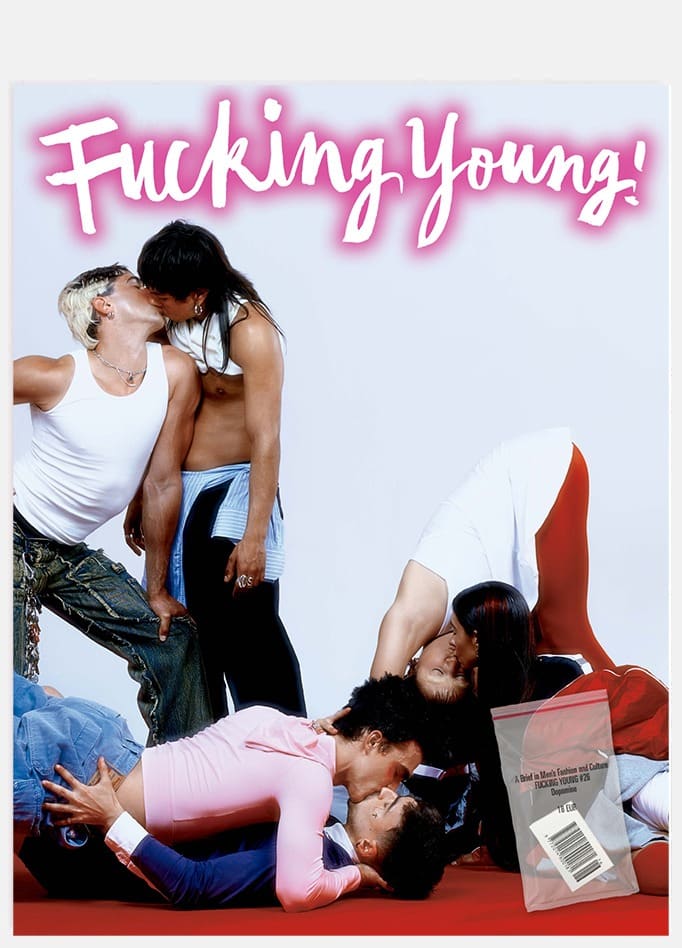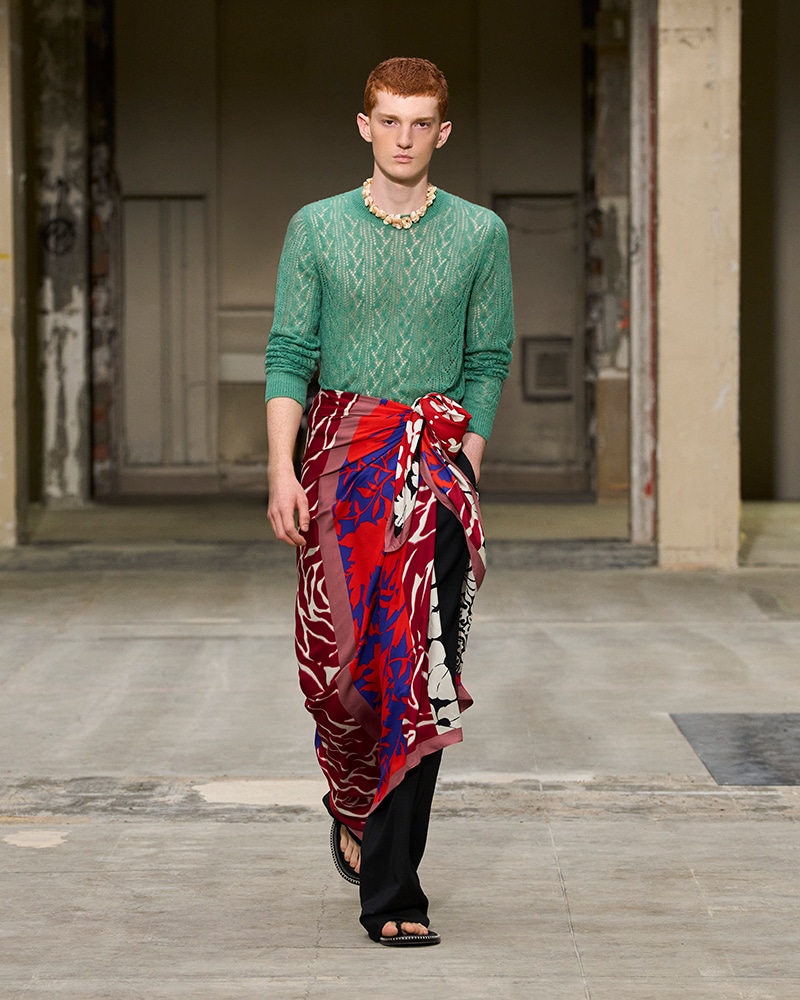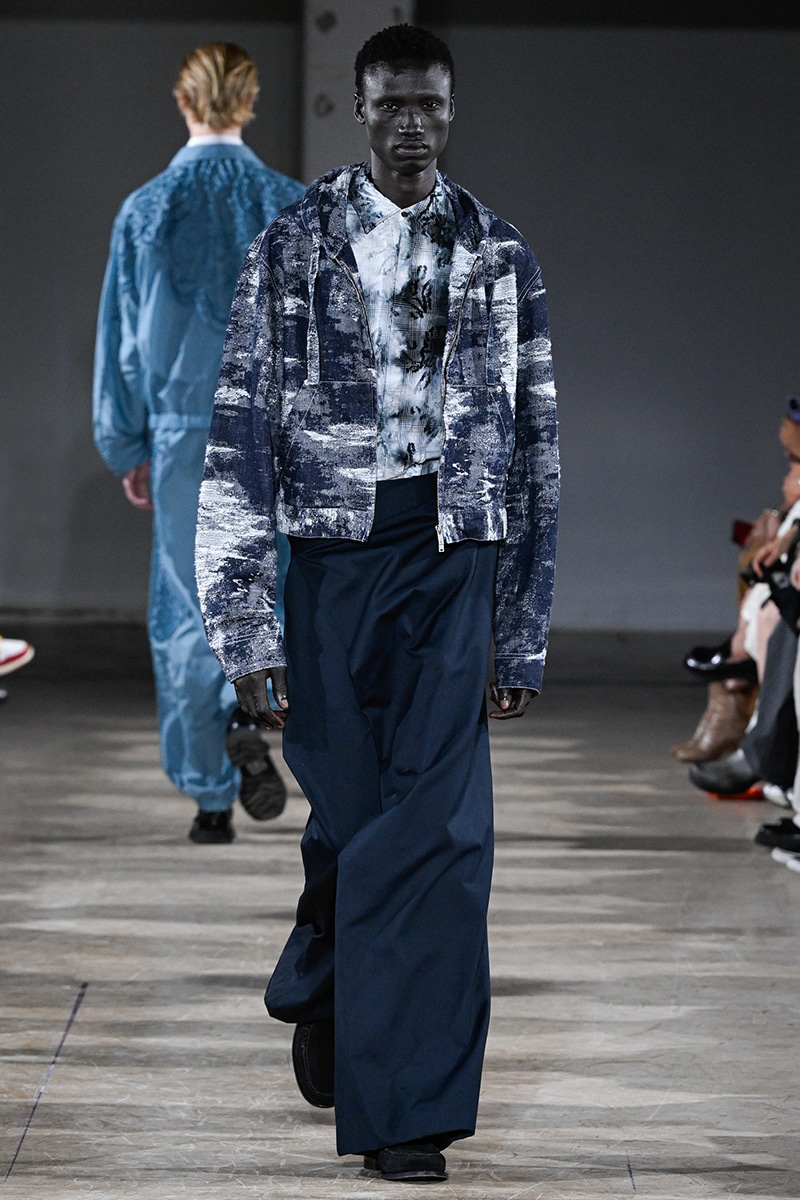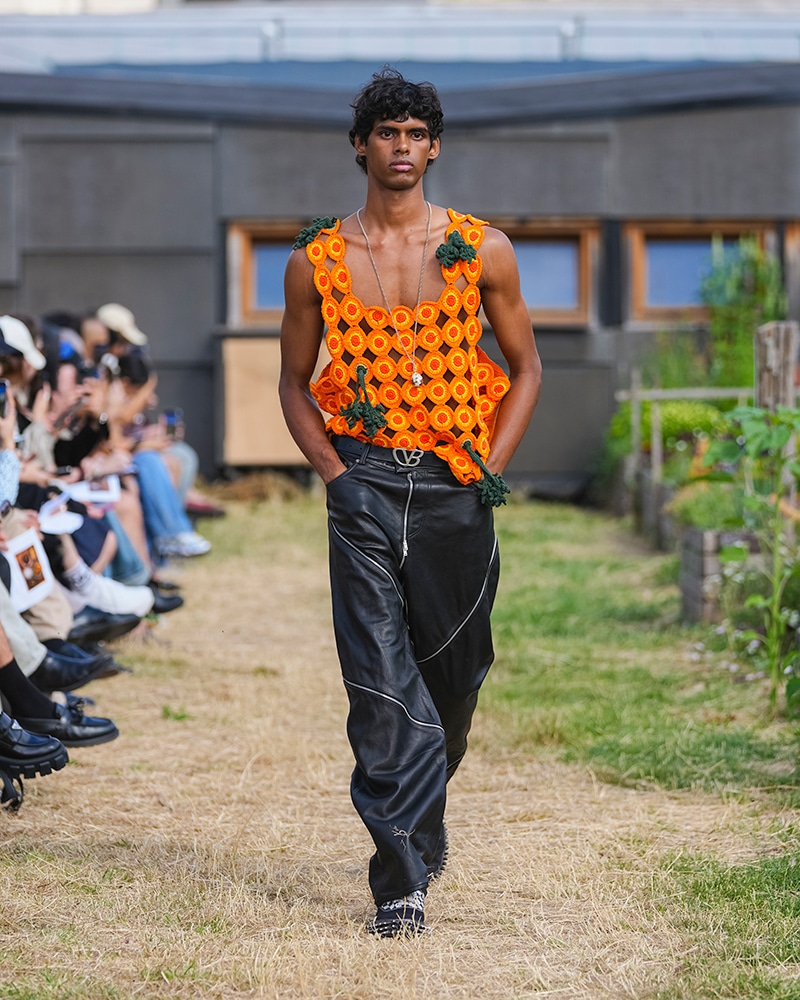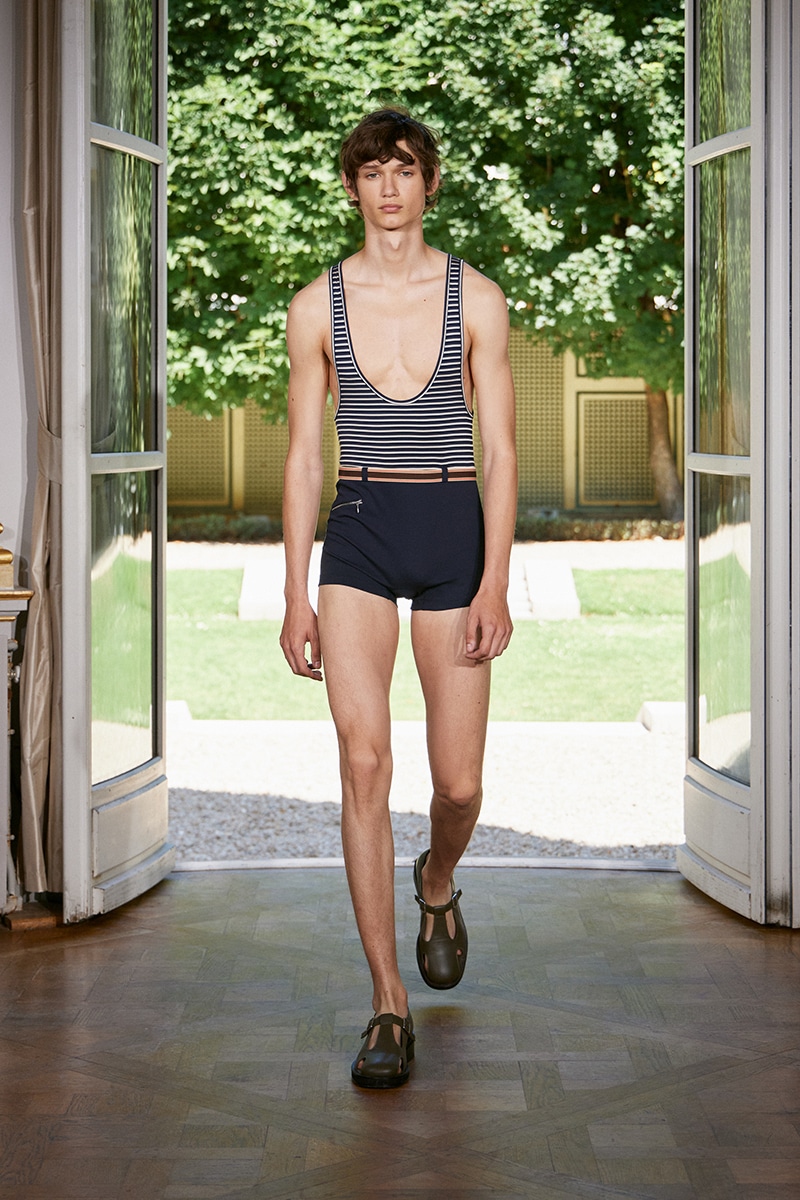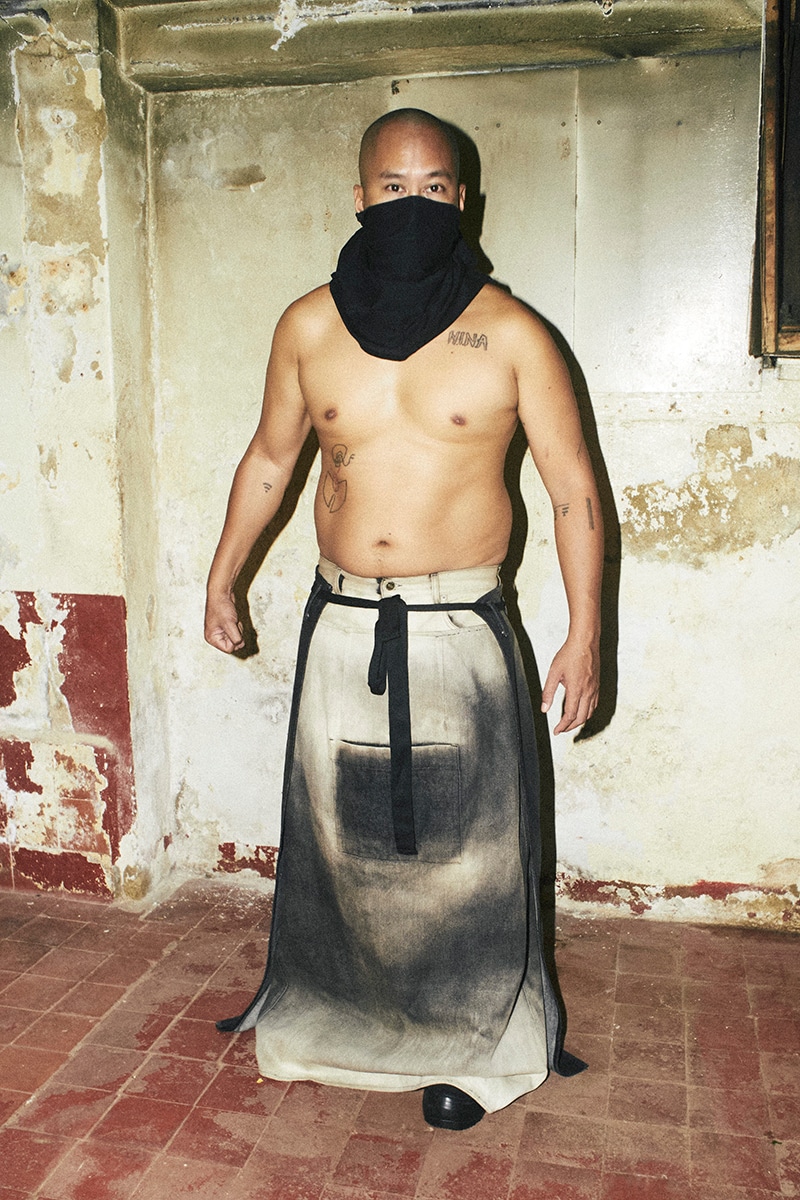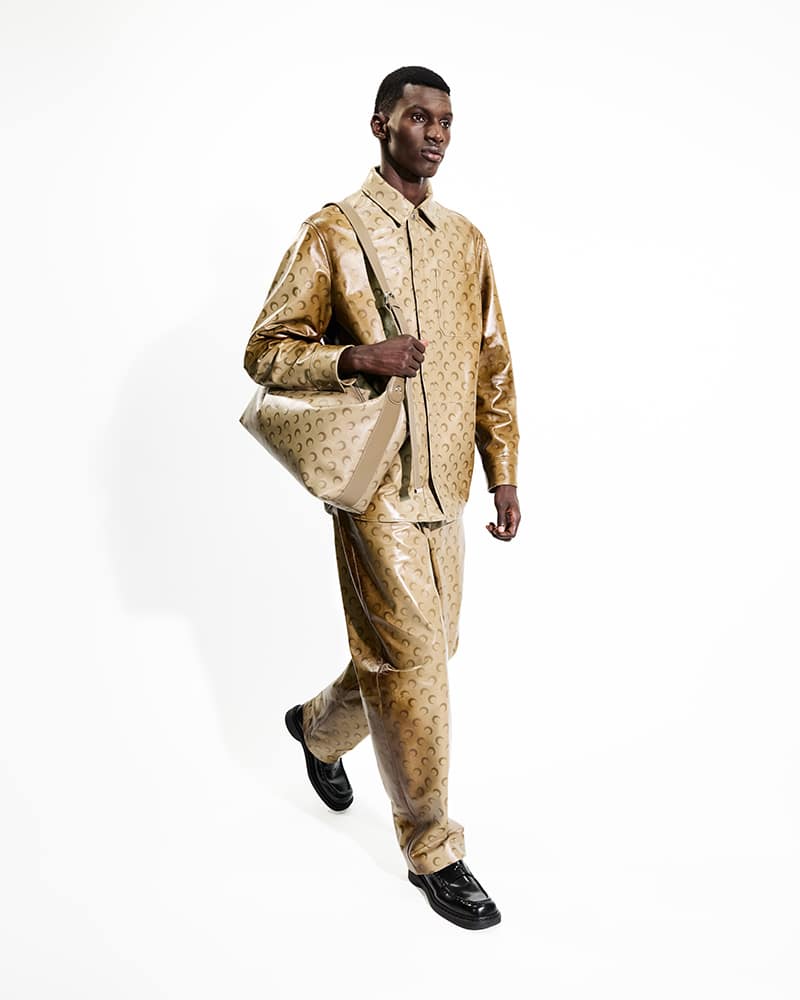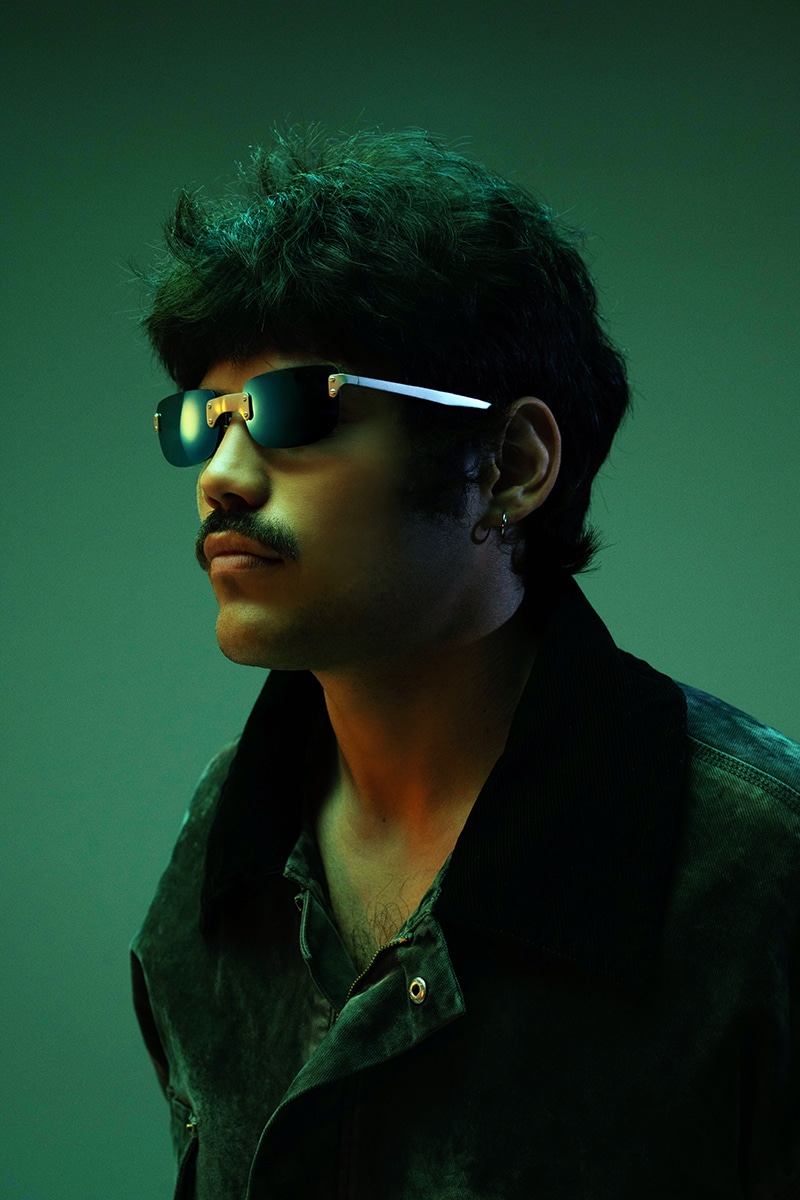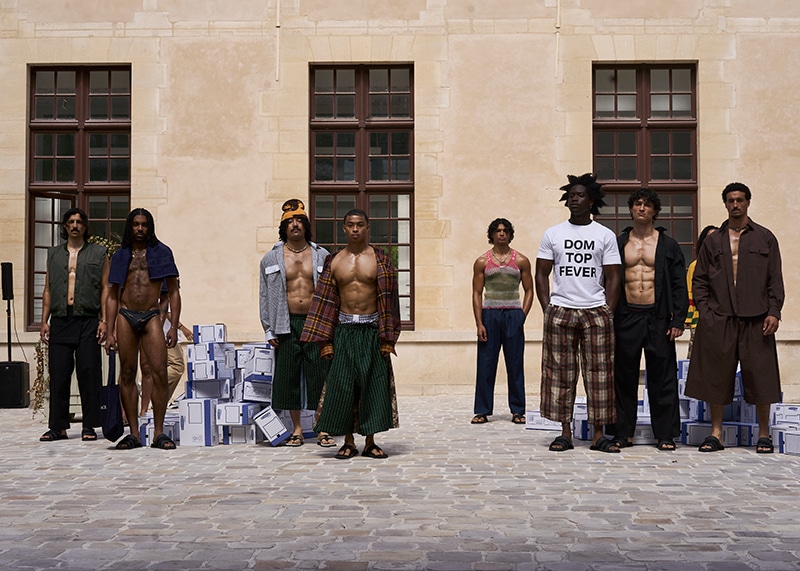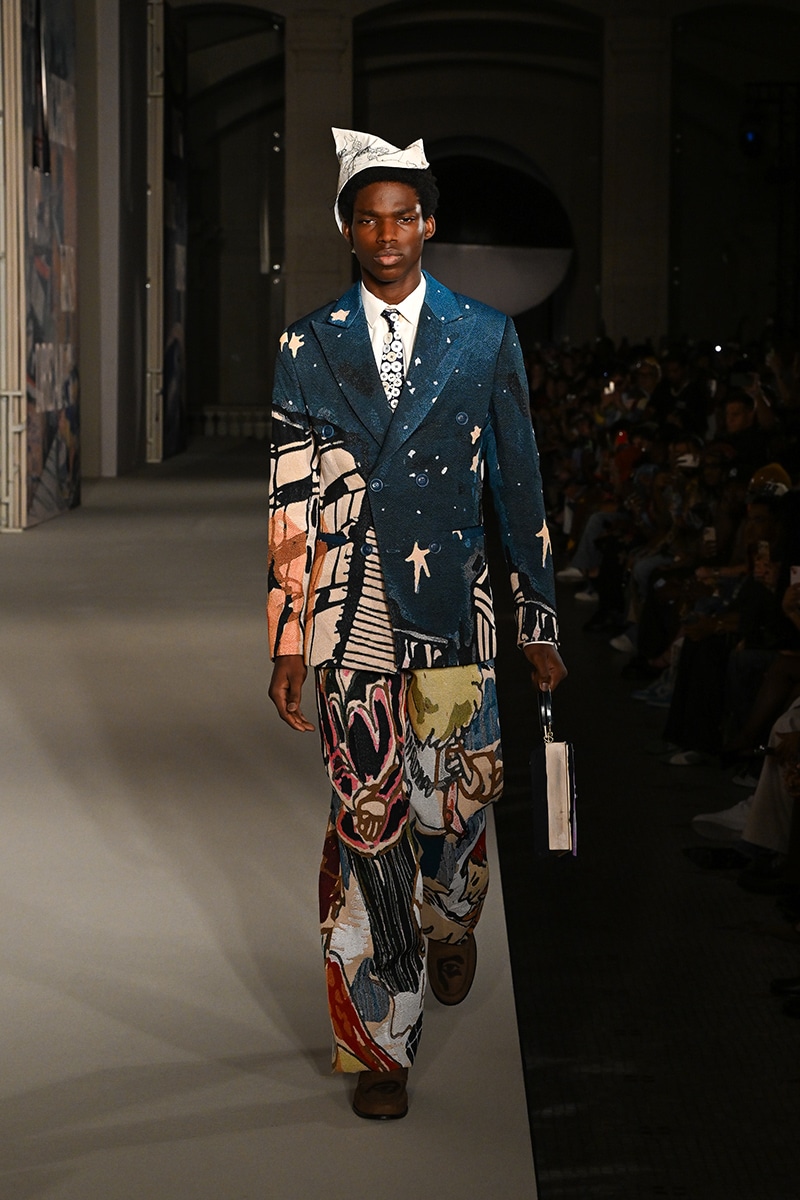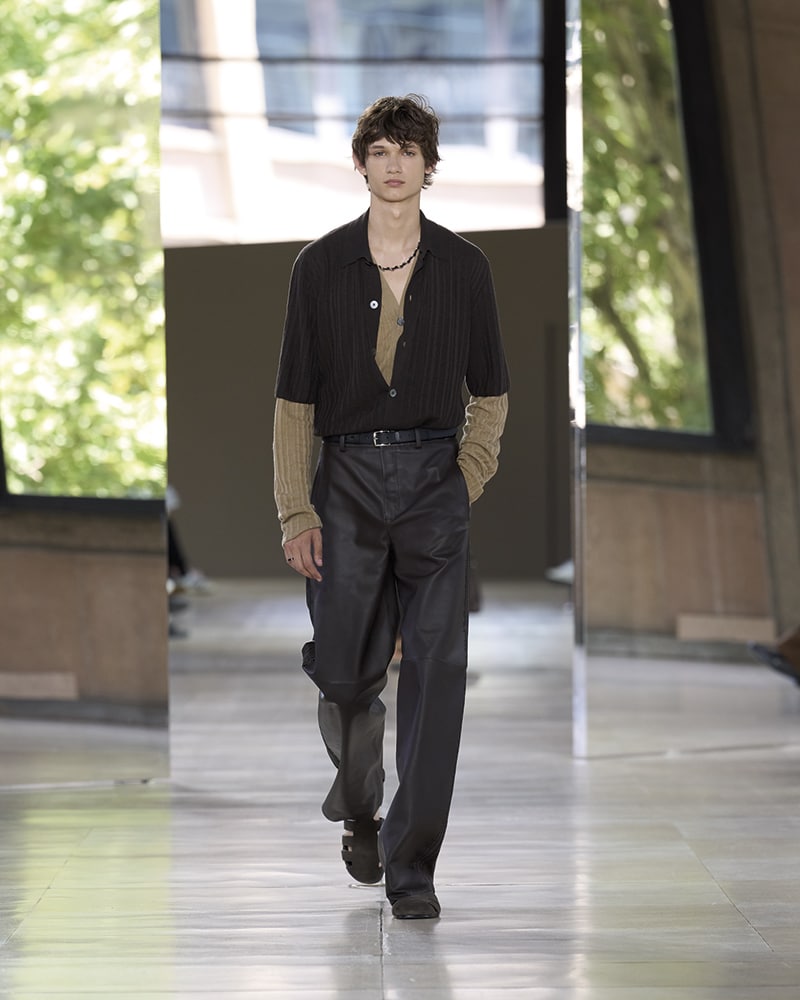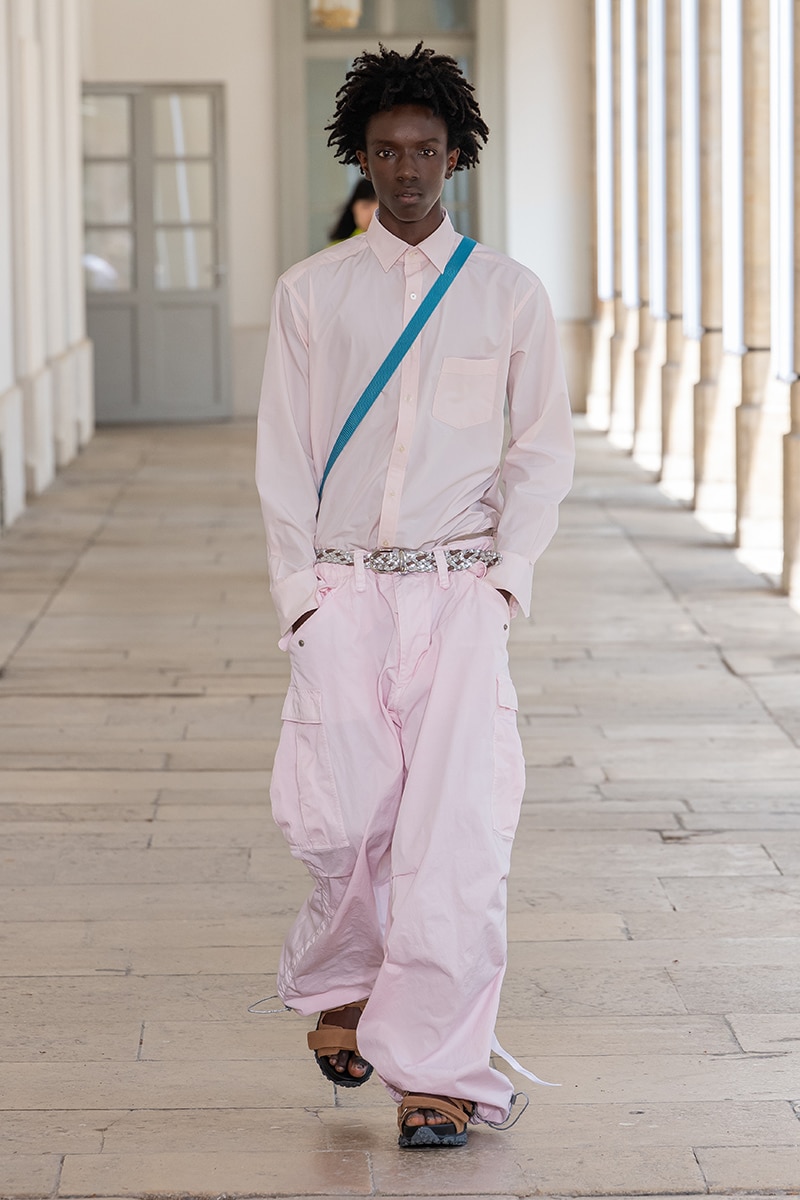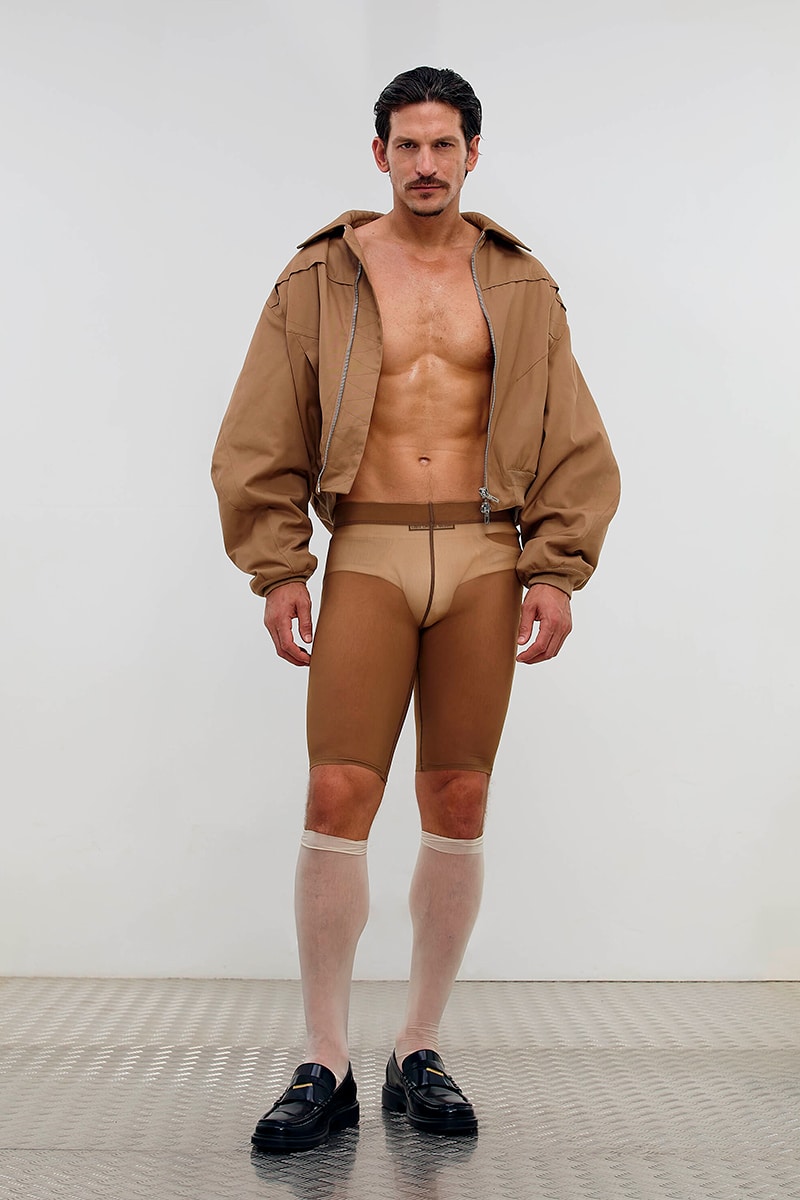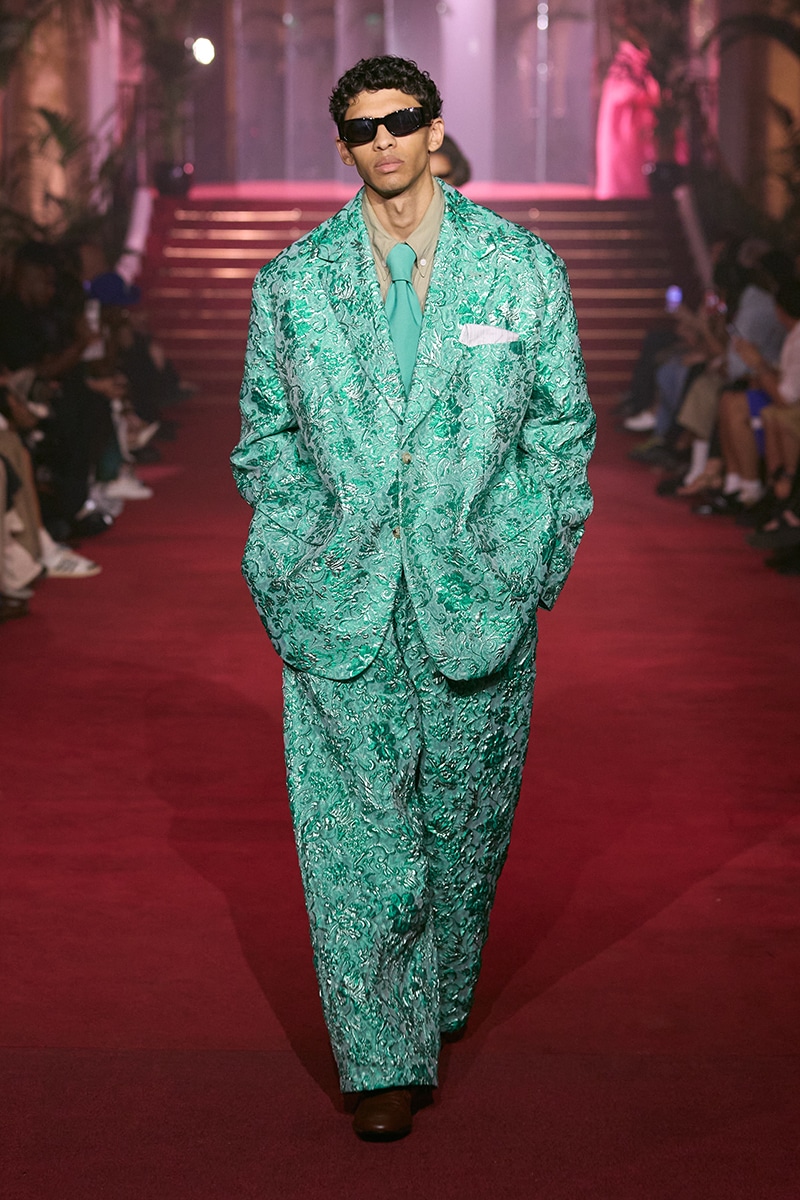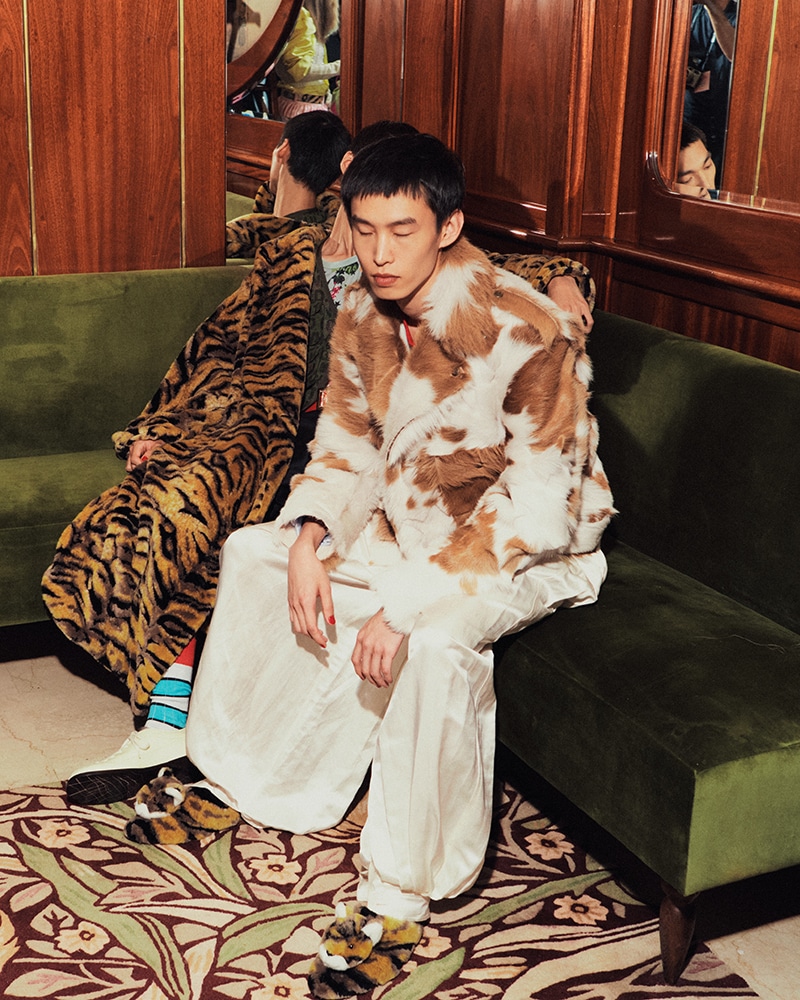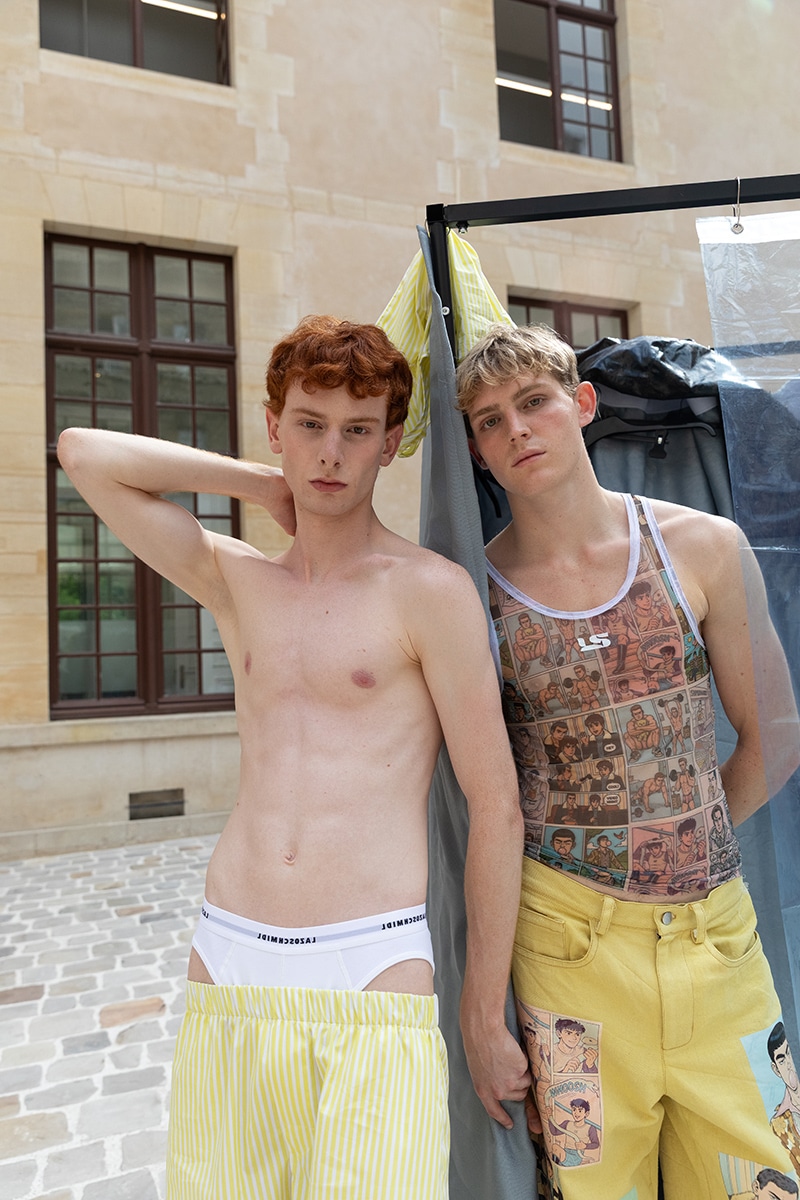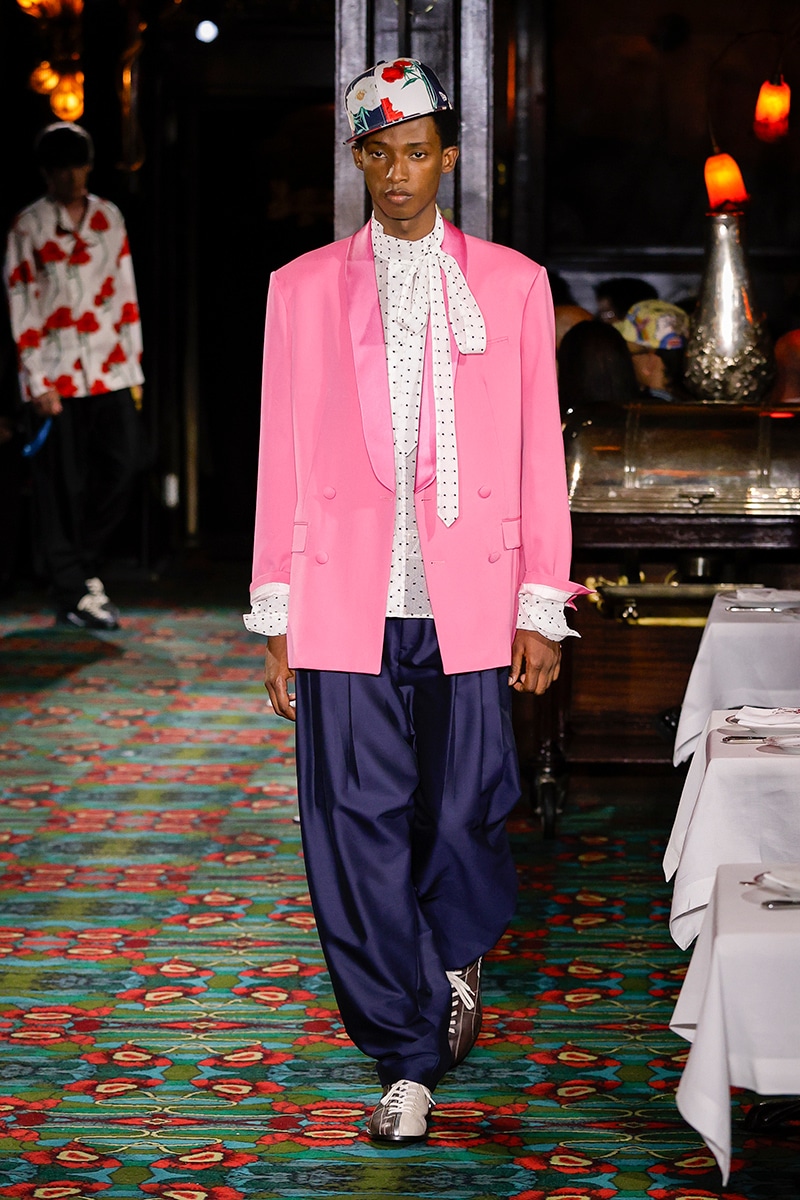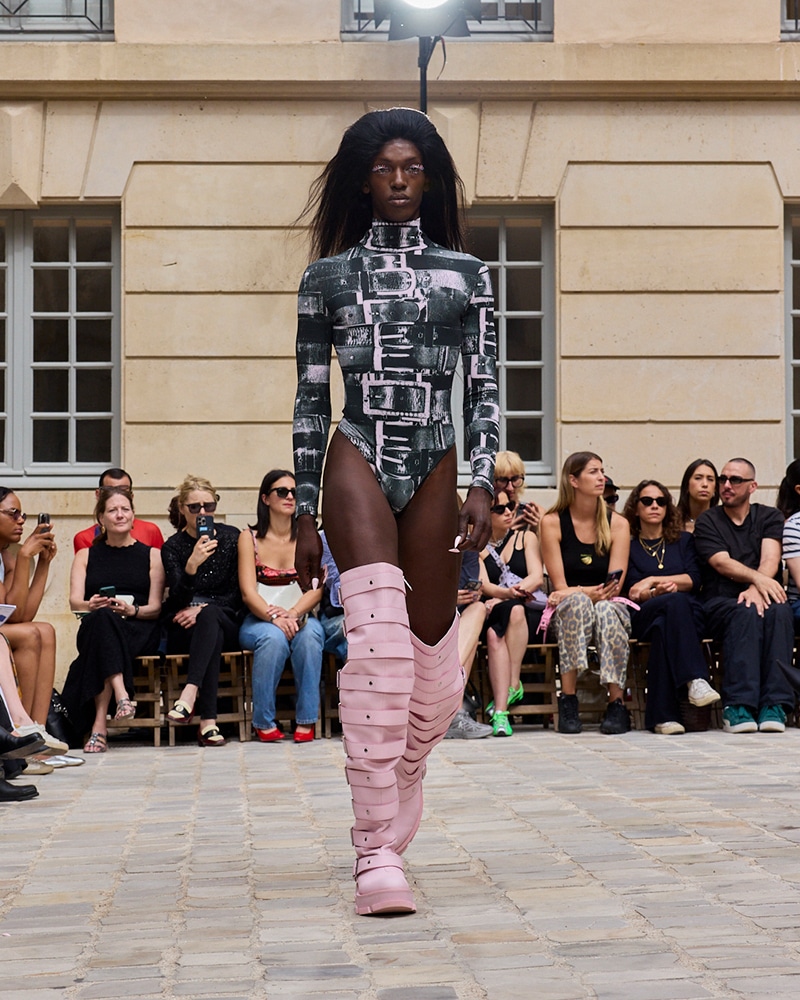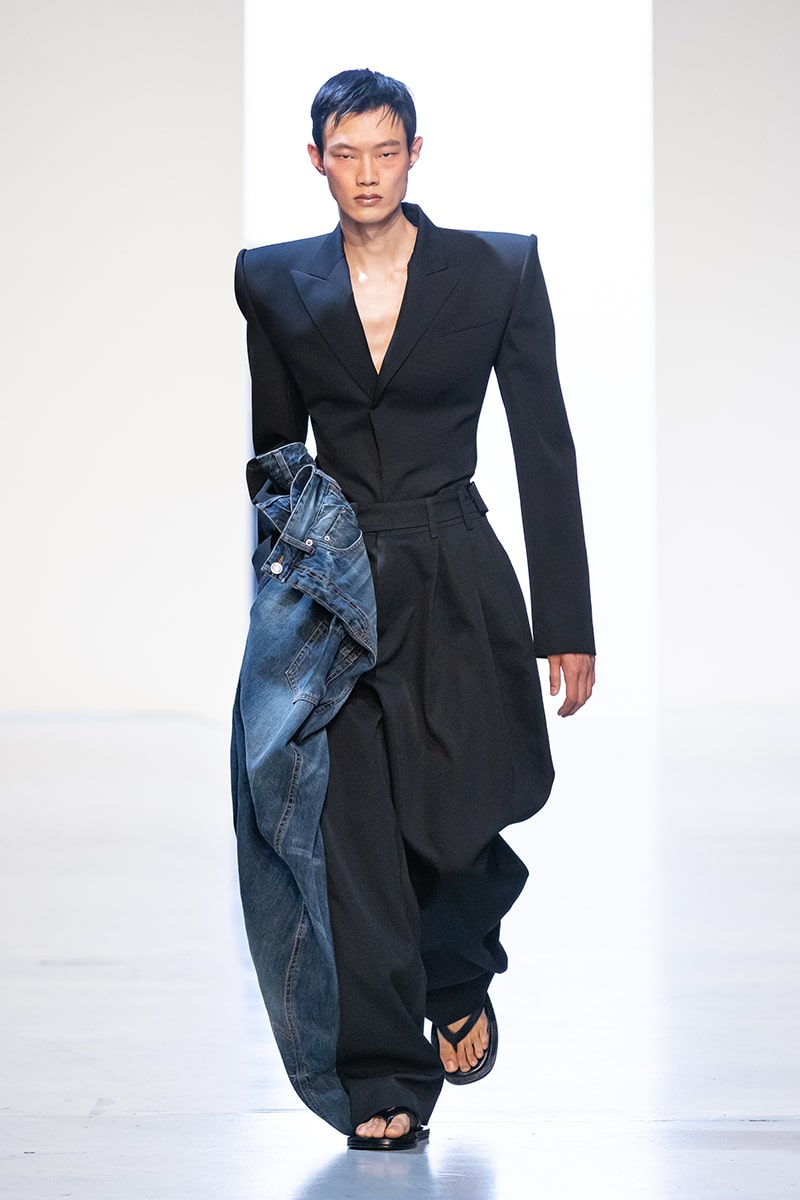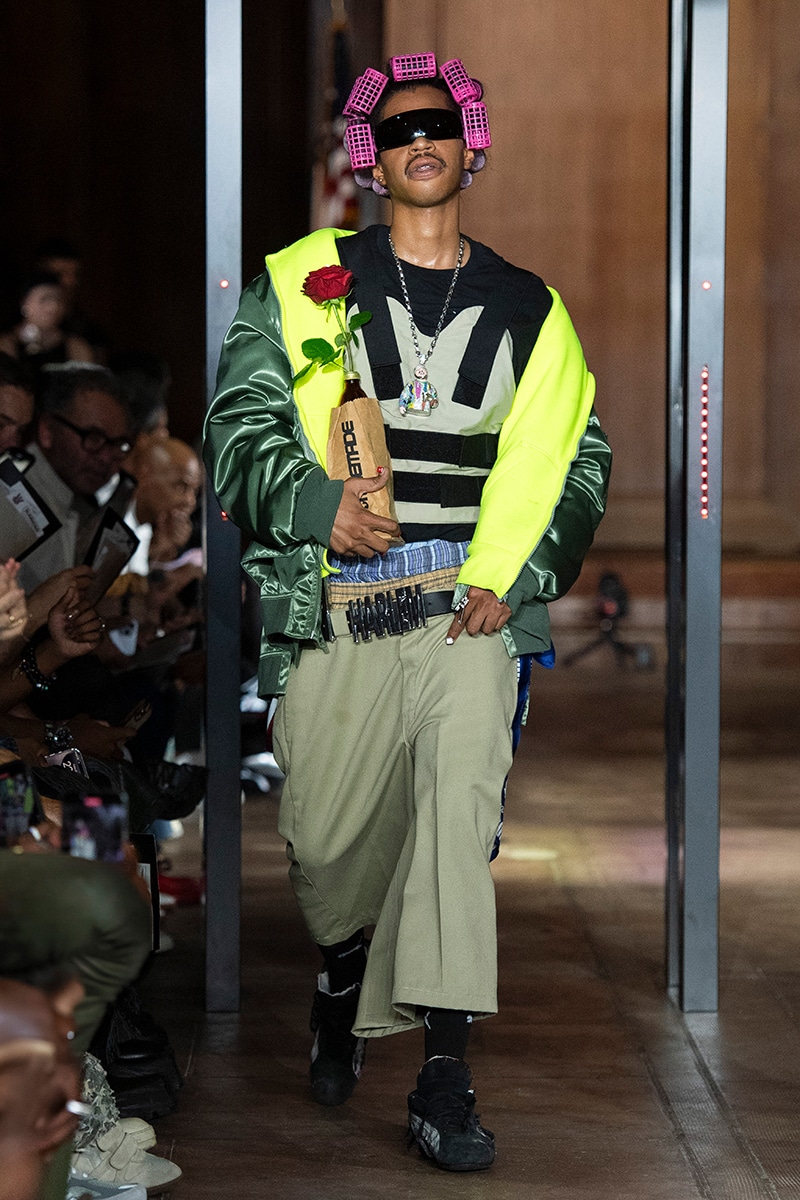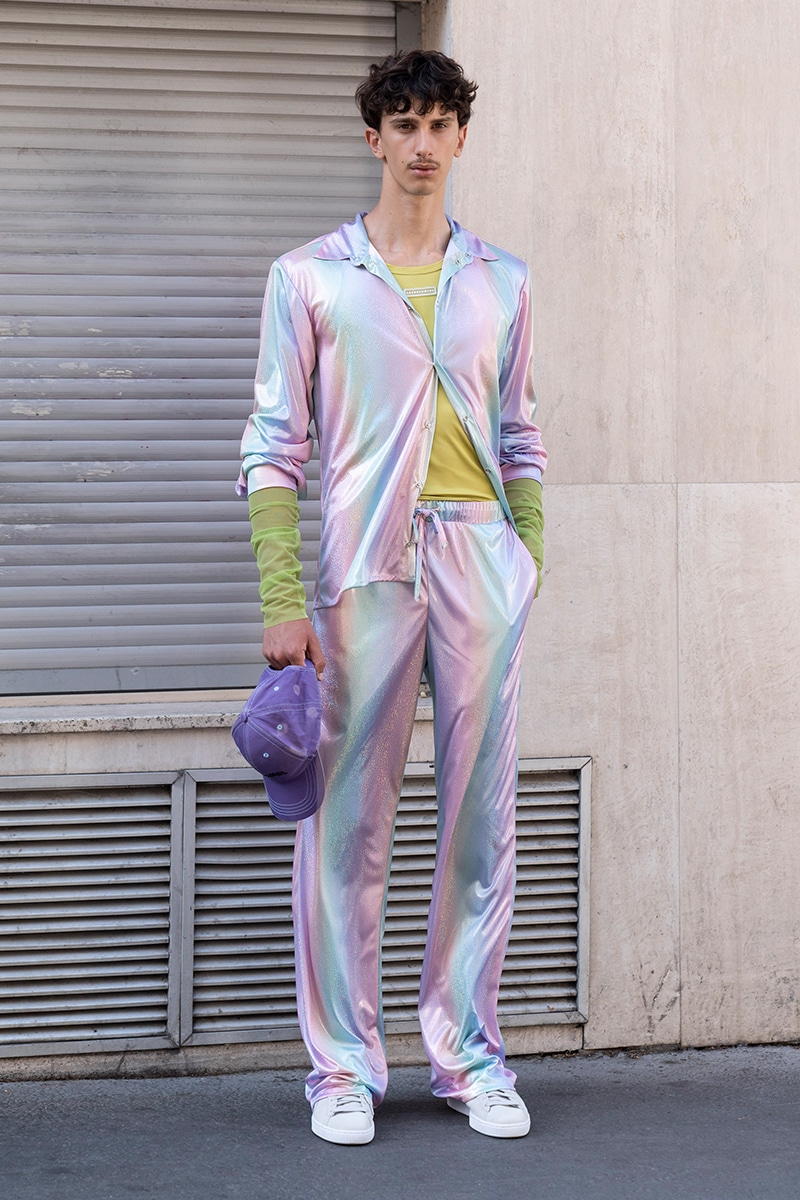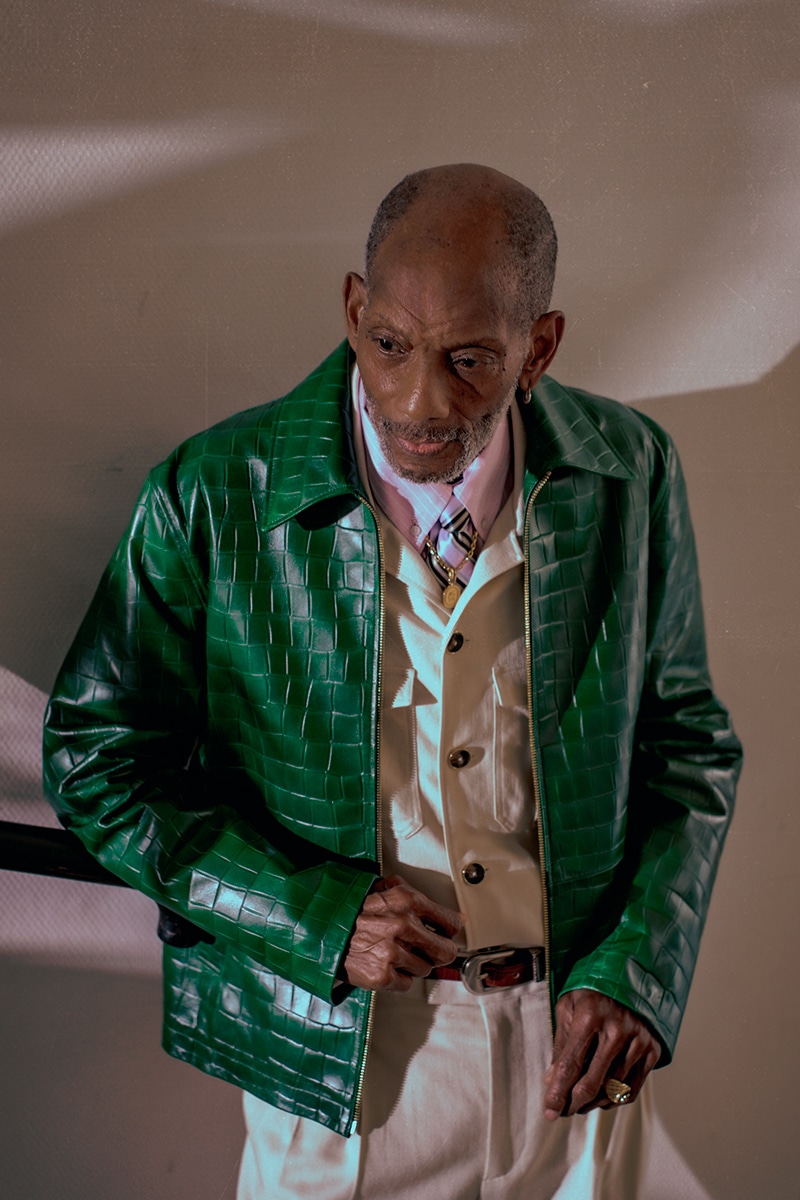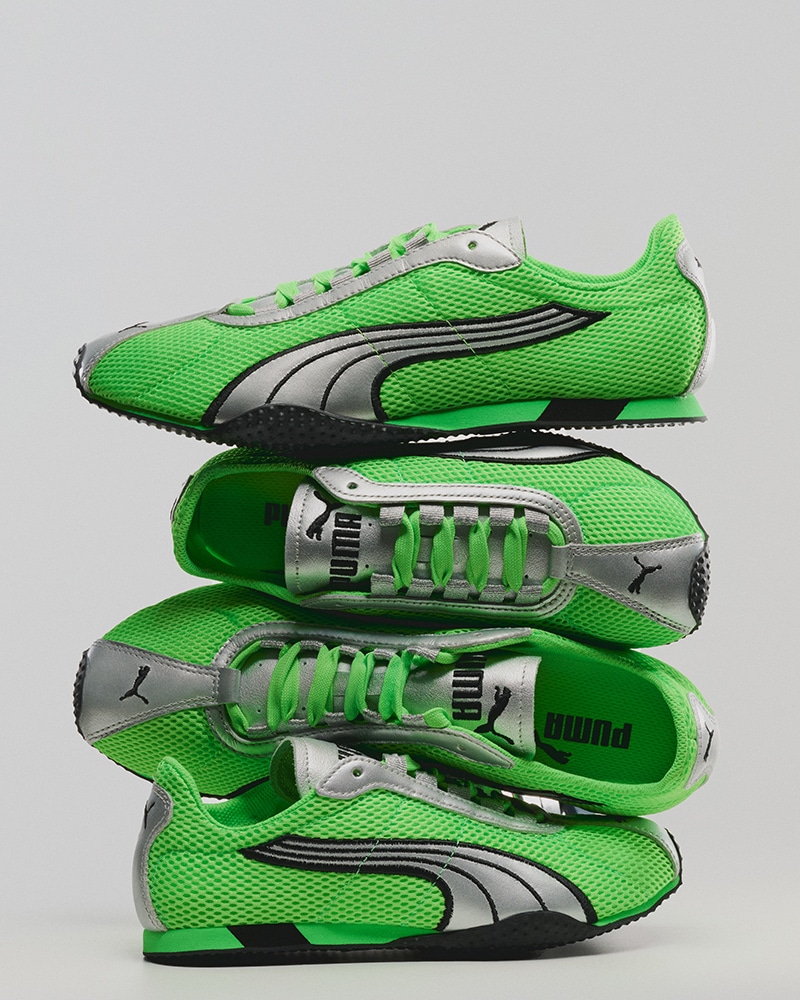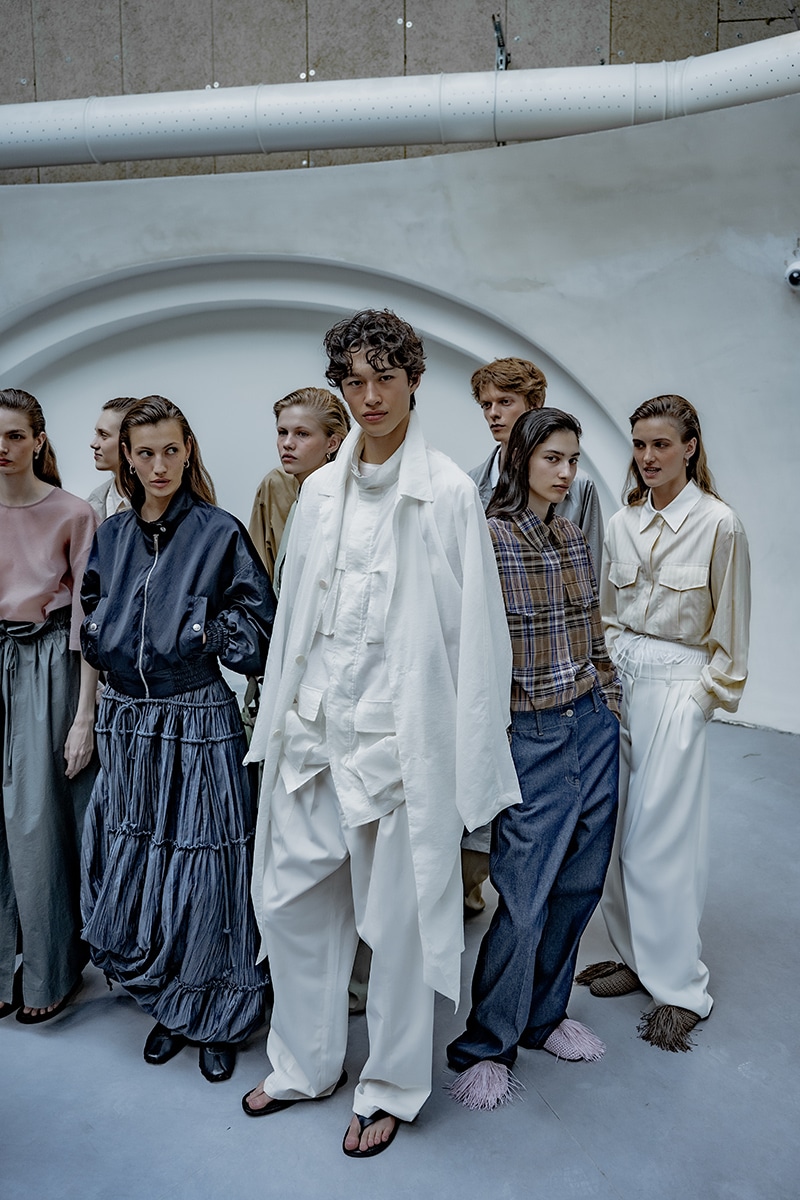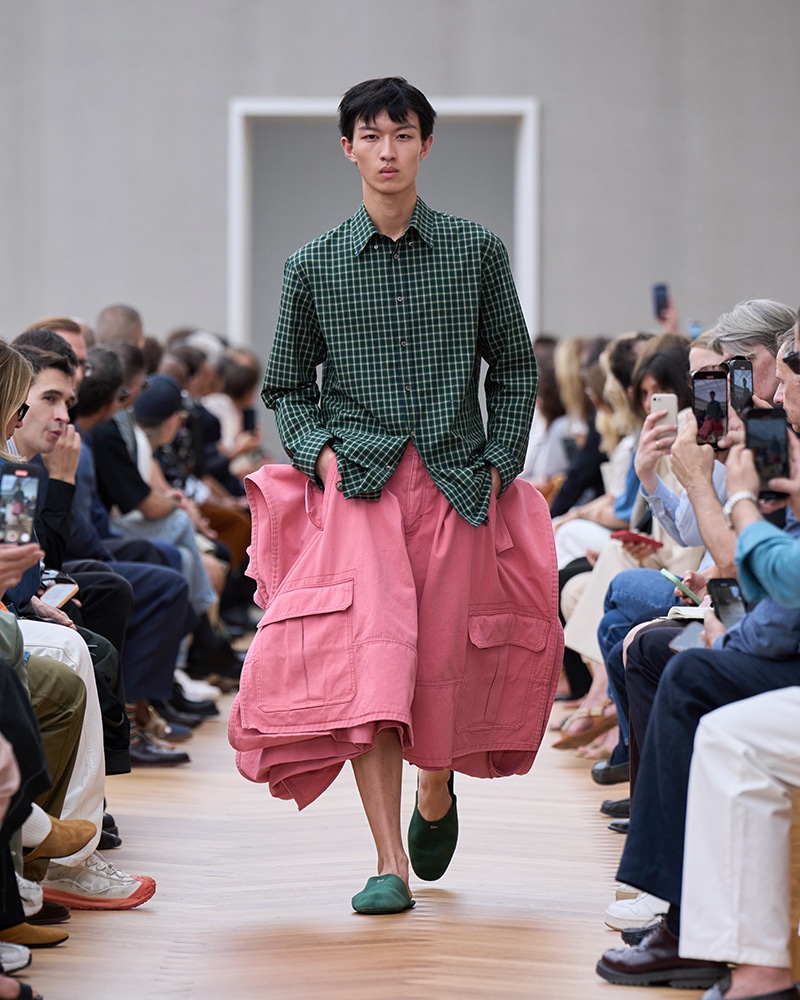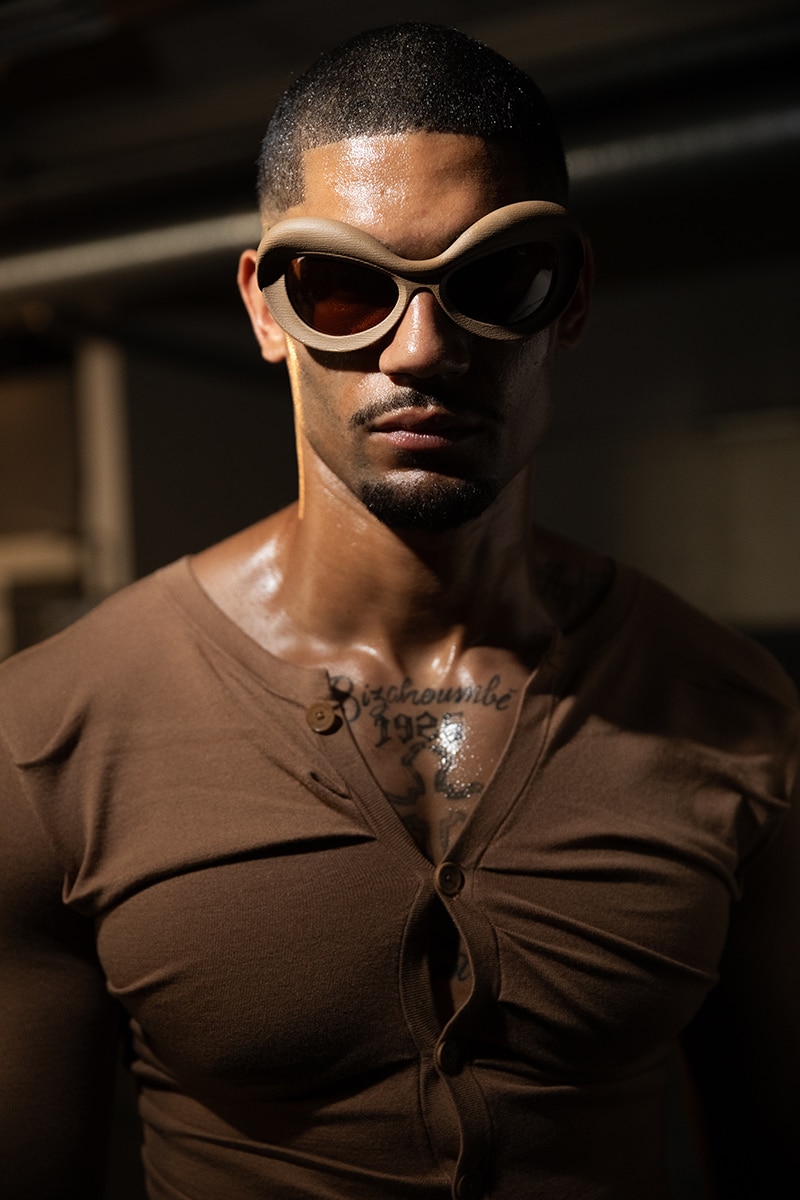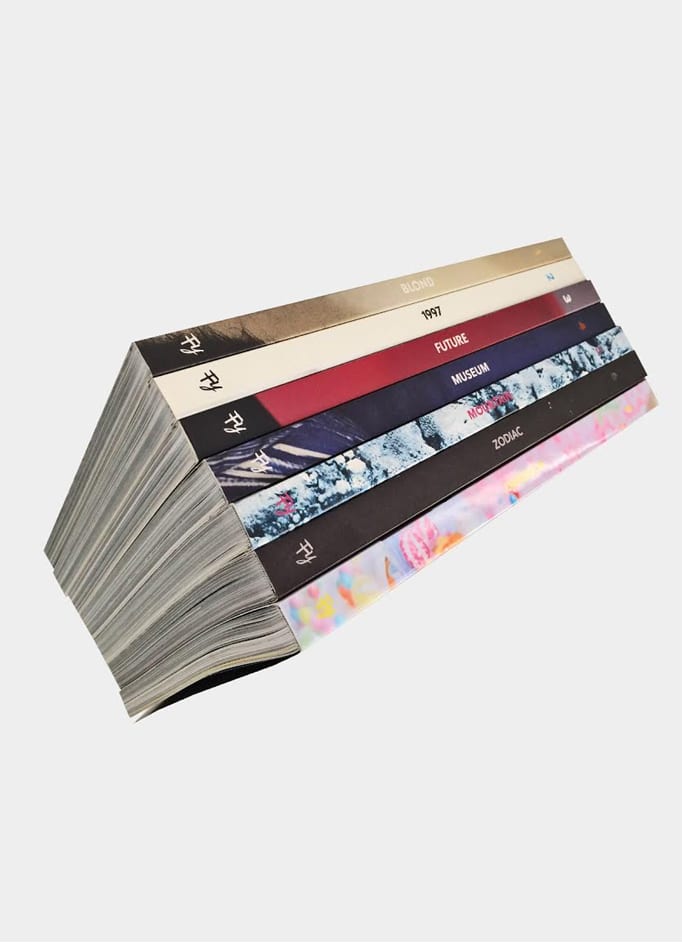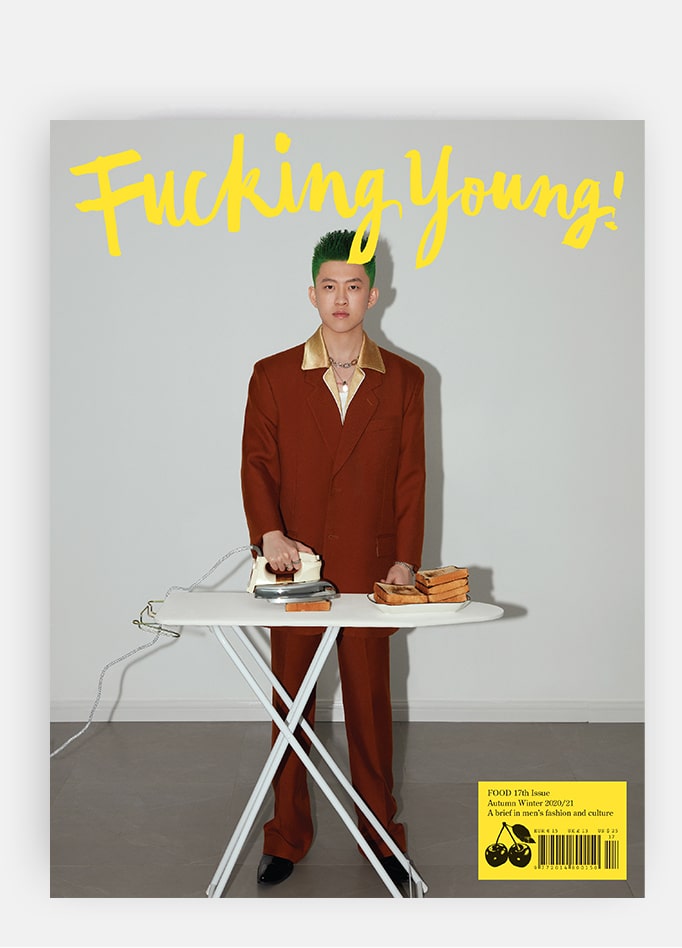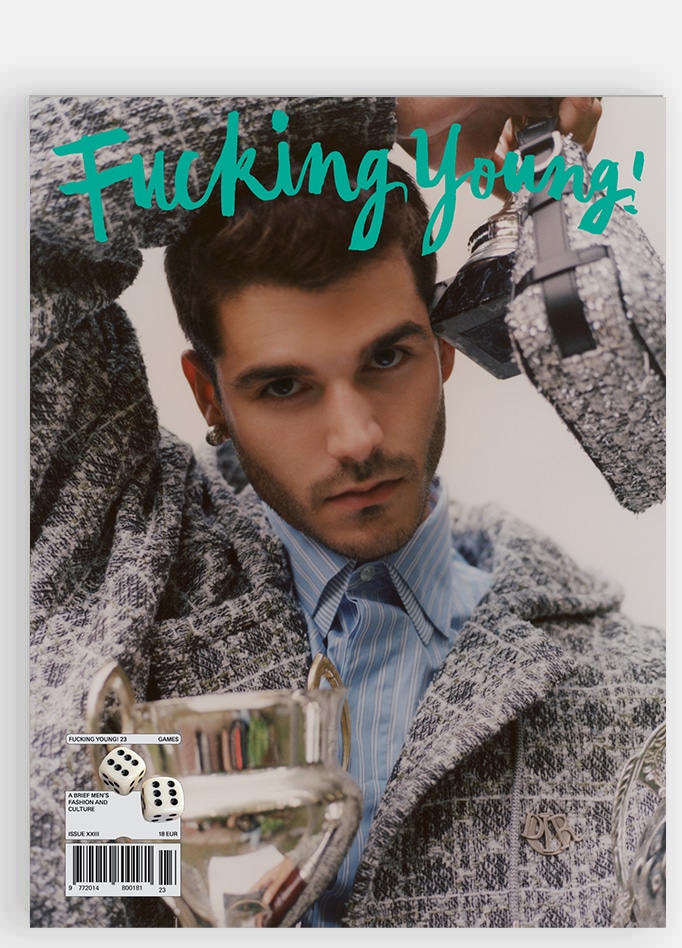
In the heart of Velásquez’s design philosophy lies a commitment to exploring personal space and challenging societal norms. Raised across Madrid, London, and Marmato, the designer infuses his collections with a sense of community and belonging that transcends geographical boundaries. Velásquez’s work is a testament to the power of fashion as a platform for storytelling, inclusivity, and the reclamation of cultural narratives. Through each stitch and seam, Velásquez invites us to reimagine masculinity, confront stereotypes, and celebrate the rich tapestry of human expression.
We had a chat with the designer before his show at 080 Barcelona Fashion and here’s what he told us:
Your brand, Velásquez, is known for exploring personal space and challenging social norms. How does your upbringing in Madrid, London, and Marmato influence your design philosophy?
Being an expatriate, for whatever reason, is something that resonates with many people. Feeling out of place and searching for where you belong and connecting with your pack is something I like to explore with VELÁSQUEZ, being able to offer that feeling of community, inclusion, and belonging to a place, regardless of where you are is what we try to convey with our designs.
The FW24 collection, BAREQUERO, is inspired by the Colombian town of Marmato and its mining culture. Can you elaborate on how your childhood memories and your cultural heritage in Colombia are reflected in this collection?
On one hand, it has been an almost therapeutic journey of introspection. Since I left Marmato in 2004, I have never returned, and I have always had bittersweet memories of that rural town culture with patriarchal, sexist, and homophobic views, at the same time contrasted with a childhood surrounded by natural beauty and the freedom that is felt in it. However, as I immersed myself in researching it and discovered that today it is one of the first small towns in Colombia where they have started to celebrate an LGBTQI+ Pride among other positive socio-political changes, I have felt even more the need and pride to reconnect with my past, to use this project as a moment of personal healing and to tell the story of that town with more than riches from the minerals in its lands but its multicultural composition of indigenous, Afro-descendants, and mestizos fighting to defend their space.

BAREQUERO refers to workers involved in small-scale gold mining. How does this concept of work and mining culture intertwine with your exploration of masculinity and social conventions in men’s fashion?
It is difficult to break with what is established in such places of work traditionally associated with macho and sexist attitudes, therefore, with this collection, I wanted to reinterpret and imagine a safe workspace where you can freely express yourself. Barequero explores, deconstructs, and rediscovers, based on photos from mining archives, different forms of expression, mixing femme, queer, masc to challenge such conventionalities and binaries.
The collection aims to challenge imperialist systems and confront cultural stereotypes. How do you navigate this complex terrain through fashion design?
Fashion design goes much beyond what we see in the garments, it is also the world and the complete creative vision of the stories we tell with our collections. From the brand, we want to offer a tool to feel free, but also provide a platform to tell and focus on untold and often ignored stories.
Can you talk about the symbolism of gold in the BAREQUERO collection and its representation of the divine and mundane aspects of life in Marmato?
The contradiction of Marmato is that it is a town bathed in gold, yet its residents have not exploited it for enrichment but for survival for 500 years. The villagers understand that its value is imposed by society, as opposed to the greedy foreigners who come to exploit the lands, harming and displacing the inhabitants. Gold is a hard-to-find treasure, and it entails long and exhausting days of work in the mine, coexisting with mercury, lack of air, darkness, and heat. Here the body becomes a tool that is exploited to achieve the dreams of colonizers from other continents. With this, the inhabitants affirm that it was a mix of enslaved descendants who joined with the indigenous during the colonization era to carry out mysterious rituals against the white men. To this day, tales and myths of witchcraft and supernatural events define the character of the town.
What kind of materials and manufacturing techniques did you use to convey the story and atmosphere of Marmato in the garments of the collection?
Old, dusty, pale, and cracked buildings characterize the unpaved streets of Marmato. For this collection, we have experimented with foil, rhinestones, clay, metals, and dusty-colored materials, mixed with workwear, upcycled denim, and leather, and materials traditionally associated with femininity to fully convey the story.

Your debut collection at Madrid Fashion Week received international acclaim, and subsequent collections have continued to push boundaries. How do you balance innovation with wearability in your designs?
Currently, our internal focus is on telling the story of the garments. We are starting to use NFCs and similar technologies so that the garments have complete traceability, with which you can discover the inspiration behind the product, where the materials come from, and even who has made it. As a slow fashion brand, we are exploring methods of selling our most unique pieces as made-to-order, but we also have more commercial garments and accessories available.
As a queer designer, how do you see your role in challenging patriarchal, sexist, and homophobic social norms through fashion?
My goal is to facilitate the path for the next generations of minorities and/or non-conformist individuals. Creating a territory of acceptance for those who challenge heteronormativity and express themselves differently to ultimately reach a more inclusive and tolerant society, since no one should suffer for simply expressing their true colors.
Check out more backstage photos captured by Luis Ayora below:

















































